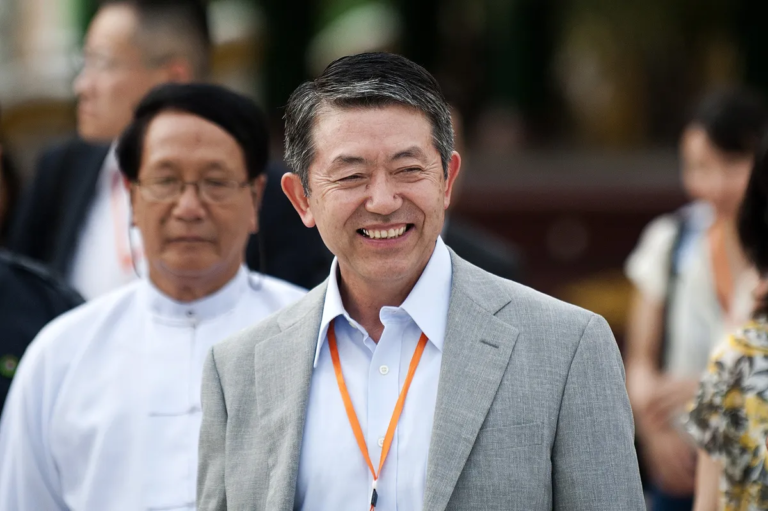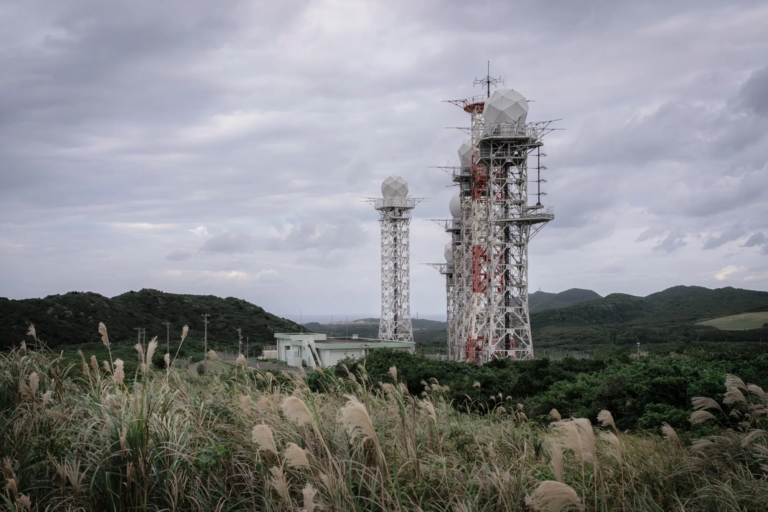
The responses of key U.S. allies – Japan, Australia, and the Philippines – to Washington’s maritime capability-commitment gap reflect the future of Indo-Pacific security.
The United States faces a dangerous strategic contradiction in the Indo-Pacific: expanding security commitments alongside eroding capacity to fulfill them. At the heart of this contradiction lies what can best be described as a “capability-commitment gap.” While the United States has strengthened security pledges to Indo-Pacific partners, its capacity to sustain this posture has deteriorated to crisis levels.
U.S. shipbuilding capacity now represents just 0.1 percent of global market share, while China commands 46.6 percent, creating a staggering disparity in the ability to sustain naval power in any prolonged confrontation. This represents a form of hollow maritime power – outwardly impressive but internally weakened in capabilities that translate hardware into strategic effect.
This gap has not gone unnoticed by regional actors facing daily Chinese gray zone operations. Rather than simply lamenting the United States’ decline, they are constructing new security arrangements and reimagining their roles in a regional order no longer dominated by a single maritime hegemon. The result is not a simple fracturing of the U.S. hub-and-spoke alliance system but the emergence of a “latticework” of interlocking security relationships with distributed responsibilities.
The responses of key U.S. allies – Japan, Australia, and the Philippines – to Washington’s maritime capability-commitment gap reveal significant insights about the future of Indo-Pacific security. While the gap presents grave risks, it has also catalyzed a more networked security architecture that may prove more sustainable than the system it is replacing. Whether this emerging framework can effectively deter Chinese aggression remains an open question. Still, its development represents the most significant restructuring of regional security arrangements since the end of the Cold War.
The Scale of Maritime Decline
Understanding the full implications of the U.S. capability-commitment gap in the Indo-Pacific requires grasping the unprecedented scale of its maritime industrial decline. According to a U.S. Navy estimate, “China has 230 times the shipbuilding capacity of the United States.” This disparity is not merely academic; it will translate directly into strategic consequences in any prolonged conflict scenario. Maritime power is uniquely dependent on industrial capacity. Unlike land warfare, where armies can retreat to regroup, naval defeats often result in the permanent loss of complex vessels that take years to replace.
Technological superiority alone cannot offset industrial capacity disadvantages in maritime competition. Even advanced vessels require replacement when damaged or destroyed, a reality that China’s industrial advantage directly addresses. Hull count matters in sustained operations. China’s ability to replenish losses at 230 times the U.S. rate creates an unsustainable asymmetry in any prolonged conflict. Moreover, China has significantly narrowed technological gaps in key domains like anti-ship missiles and undersea capabilities, while simultaneously maintaining overwhelming production capacity, combining quantity with increasingly comparable quality.
The origins of this decline are multifaceted, reaching back to the post-Cold War period when defense consolidation and globalization hollowed out the U.S. shipbuilding workforce and infrastructure. In the meantime, the United States faces a dangerous interim period in which its strategic ambitions increasingly exceed its ability to sustain them.
The implications for Indo-Pacific security are significant. In previous eras, U.S. naval dominance provided both deterrence against aggression and reassurance to allies. Today, this foundation is eroding precisely when regional tensions are escalating. Perhaps most concerning is what this capacity gap means for extended deterrence. The credibility of U.S. security guarantees has traditionally rested on both will and capability. While political will remains subject to debate, the capability dimension faces unmistakable material constraints.
Regional Responses to Maritime Decline
Japan’s Strategic Recalibration
Japan’s response to the United States’ maritime decline represents perhaps the most extensive strategic shift in Northeast Asia since World War II. Once constrained by its pacifist constitution and content under the U.S. security umbrella, Japan is now undertaking a comprehensive recalibration of its defense posture.
After decades of maintaining military expenditures below 1 percent of GDP, Japan has committed to raising its defense budget to 2 percent by 2027. More significant is how these funds are being allocated – Japan is systematically developing capabilities that complement declining U.S. maritime power, including anti-ship missiles, maritime patrol aircraft, and submarine capabilities. Notably, Japan has reinterpreted its constitution to permit “counterstrike capabilities,” allowing it to target enemy bases in response to an attack.
Beyond hardware, Tokyo is reimagining its strategic relationships. While maintaining the U.S. alliance as the cornerstone of its security strategy, Japan has pursued new security partnerships, including the 2022 Reciprocal Access Agreement (RAA) with Australia and the 2024 RAA with the Philippines, Japan’s first such agreements in Asia. This creates a framework for Japanese troops and equipment to directly support the Philippines during crises in the South China Sea.
Australia’s strategic response differs markedly from Japan’s yet reflects similar underlying concerns. Historically reliant on U.S. naval power while focusing on land forces, Australia is rapidly pivoting toward a maritime-focused defense posture that serves as both a hedge against U.S. decline and a complementary capability within the broader regional security architecture.
The centerpiece of Australia’s strategy is the AUKUS agreement, a trilateral security pact with the United States and the United Kingdom that will deliver nuclear-powered submarines to the Royal Australian Navy. By committing to nuclear propulsion technology, Australia is positioning itself to assume greater responsibility for deep-ocean deterrence missions traditionally handled by the U.S. Navy’s attack submarine fleet – precisely where the United States’ industrial limitations are most acute.
What makes Australia’s approach distinctive is its emphasis on maintaining strategic depth through diversified relationships. Australia has expanded security cooperation with Japan, executing joint exercises that strengthen maritime deterrence without direct U.S. facilitation. This hedging extends to Australia’s defense industrial base, with significant investments in domestic shipbuilding capabilities and partnerships throughout the region.
The Philippines’ front-line position was made starkly apparent in recent confrontations at Second Thomas Shoal. In March 2024, the China Coast Guard conducted dangerous maneuvers and used water cannons against a Philippine supply vessel, resulting in minor injuries to seven crew members. These actions occurred despite U.S. naval assets in the region, revealing China’s calculation that a U.S. military presence would not translate into direct intervention.
President Ferdinand Marcos Jr.’s administration has responded with a multifaceted approach combining enhanced U.S. cooperation, diversified security partnerships, and nascent capability development. The cornerstone is the Enhanced Defense Cooperation Agreement (EDCA), which has expanded from five to nine designated facilities for U.S. rotational forces, including bases facing the South China Sea and Taiwan Strait.
Recognizing the limitations of relying exclusively on U.S. capacity, the Philippines has aggressively pursued security relationships with other regional powers, announcing trilateral coast guard exercises with the U.S. and Japan and deepening military cooperation with Australia.
The “Latticework” vs. “Hub and Spoke”: A New Security Architecture
The collective responses of Japan, Australia, and the Philippines to the U.S. capability-commitment gap are not merely individual adaptations but components of a broader structural transformation in Indo-Pacific security architecture. What is emerging is a fundamental shift away from the traditional “hub-and-spoke” model that has defined U.S. alliance relationships since the Cold War, toward what strategic analysts increasingly describe as a “latticework” approach to regional security.
China’s Exploitation Strategy
The capability-commitment gap in U.S. maritime power does not exist in a vacuum. China has developed a sophisticated strategy to exploit this growing vulnerability, focusing precisely on the space between the United States’ expanding security commitments and its declining capacity to fulfill them. Through carefully calibrated “gray zone” operations, Beijing has found ways to advance its territorial claims and strategic position without triggering conventional military responses.
These operations target institutional seams rather than testing military capabilities directly, allowing China to incrementally alter the status quo while avoiding scenarios that might trigger decisive U.S. intervention.
The strategic logic behind these operations is evident in recent confrontations in the South China Sea. At Second Thomas Shoal, Chinese Coast Guard vessels have consistently harassed Philippine resupply missions, using water cannons and dangerous maneuvers that fall short of kinetic combat but effectively constrain Philippine access.
What makes these operations so effective at exploiting the capability-commitment gap is their deliberate targeting of institutional rather than military vulnerabilities. China’s message with recent near accidents is, “You don’t want to escalate this.” The U.S. Navy maintains a significant presence in the South China Sea, conducting freedom of navigation operations and deploying carrier strike groups when tensions escalate. Yet this military presence has proven insufficient to prevent China’s incremental advances.





